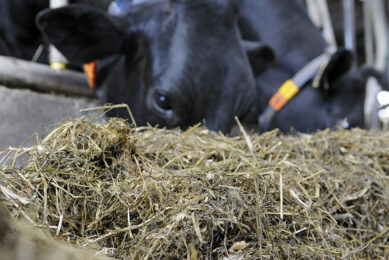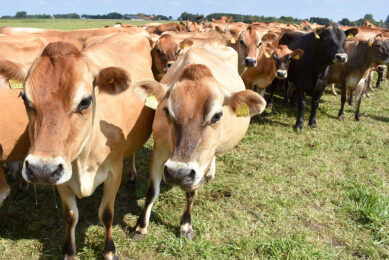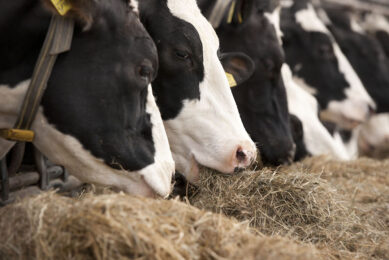Quality in silage for better milk production
![The ability of cows to convert feed protein into milk is also dependent on silage quality. [Photo: Mark Pasveer]](https://www.allaboutfeed.net/app/uploads/2020/12/001_619_rb-image-2695643.jpeg)
Improving silage quality opens the door to increased feed intake, milk production and feed efficiency of dairy cows. This can be done by using silage inoculants that reduce the loss of digestible organic matter consumed by yeast, moulds and other unwanted microorganisms. By reducing the loss, more digestible organic matter per kilogram of silage dry matter is left for the cows.
Every cow has a basic need for energy to cover the energy cost for maintenance, movement, growth, and fetus respectively. When milk yield per cow increases, the basic need for this type of energy comes down. This way, the farmer can increase the feed efficiency on herd level. Improving milk yield per cow is about improving the energy intake. In high forage rations feed intake of the dairy cows are restricted by physical fill of the ration in the rumen. In that situation, feed intake can be improved by adding more concentrate to the ration (lowering the forage:concentrate-ratio) or by increasing the energy concentration of forage (increasing the amount of digestible organic matter per kg of dry matter, OMD).
Energy in the silage
Up to 25% of the energy of silage is found in the fermentation acids. The more efficient the fermentation of the silage the more energy is preserved into the silage as opposed to being lost in non-lactic volatile fatty acids. Based on model calculations, each curve in Figure 1 (see all Figures below this article) shows the milk production for cows fed ad libitum, in response to increasing energy intake obtained by including more concentrate in the ration. The broken and full lines represent cows with low (LY) and high milk yield capacity (HY), respectively. Increasing energy intake of high capacity cows, from 134 to 174 MJ per cow per day by feeding more concentrate, increases milk production from 32.2 to 34.8 when organic matter digestibility of silage is 75. The same increase in energy intake causes milk production to increase from 32.2 to 36.7 kg when organic matter digestibility of silage is 84. At the same level of feeding (e.g. 174 MJ per cow per day), cows fed the silage with high digestibility produce almost 2 kg of milk extra per day because they digest and use the total feed ration more efficiently, compared to cows fed the silage of medium digestibility.
Efficiency of protein metabolism
The ability of cows to convert feed protein into milk also depends on the quality of the silage fed. During fermentation of silage, different microorganisms degrade plant protein into peptides, amino acid and finally ammonia nitrogen. When the dairy cow eats the silage, ammonia-nitrogen is used by the bacteria in the rumen for protein synthesis. The efficiency of the protein synthesis in the rumen is dependent on the immediate availability and nature of ammonia nitrogen, carbohydrates and amino acids. If carbohydrates are not immediately available in sufficient amounts in the rumen, ammonia-nitrogen is removed from the rumen, transported to the liver, converted to urea and excreted in the urine. Therefore, the less plant protein degraded during the fermentation of silage, the more feed protein the cow can use directly for milk production.
Preserving digestible organic matter
Maturity of the plant material is the main factor to influence the digestibility of the silage. However, the amount of digestible organic matter filled into the silo, is affected by the fermentation process. The faster and more efficient the fermentation process, the less the loss of digestible organic matter during the fermentation. Using silage inoculants therefore results in more digestible organic matter left for the cows. Examples of the reduction in dry matter loss due to application of different silage inoculants is shown in Figure 2 and 3 below.
References are available on request.











